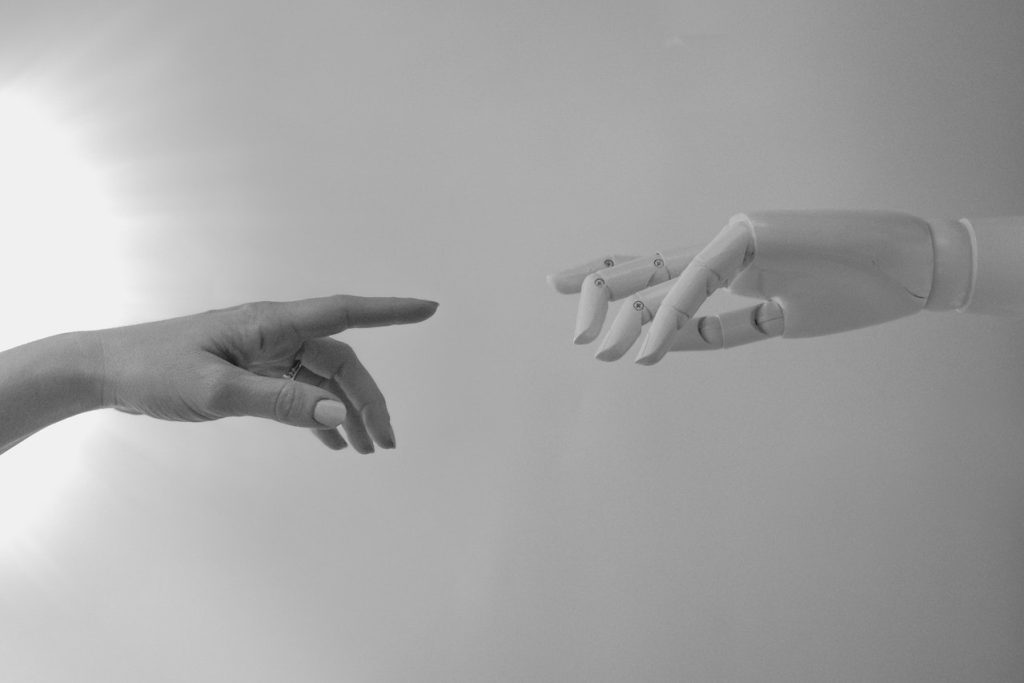
In these fast-paced modern times, technological advancements are replacing human efforts. A heated debate has been rising for some time now: “Will AI replace us”?. Well, there are many arguments about this topic, and everyone has their own opinion, but let’s first dive into what AI actually is.
WHAT IS AI?
Artificial Intelligence is the creation of systems that are capable of doing tasks that would normally require human intelligence. It’s similar to teaching computers to reason and acquire new skills on their own. Hence, enabling them to discern patterns, make judgments, and even comprehend spoken language.
You have utilized AI a lot of times without even realizing it. Smartphone features like SIRI or an autocorrect feature to enhance your photo are the simplest examples of AI’s intervention in our daily lives. It enhances and automates our tasks, making things efficient and easier.
EMERGENCE OF AI IN DESIGN
Like every other technology, AI is also booming, surpassing expectations, and getting more powerful. As a result, it is revolutionizing many industries, such as healthcare, IT, education, etc.
AI is sweeping into the design field as well and revolutionizing the creative and thinking processes. In design, it uses generative AI technology that can create new ideas, text, and shapes with the help of existing databases. Generative AI has powerful algorithms to design amazing advertisements, graphics, visuals, and infographics. It has enabled anyone to create new works and ideas and has the potential to upend the design and art industries. Designers are harnessing the power of AI to optimize their workflows, generate new ideas, and dare to achieve the impossible. As a result, they are capable of designing Logos, Flyers, Websites, Illustrations, Images, etc. instantly.
AI is sweeping into the design world and helping designers push their limitations and boundaries. It offers an unprecedented level of precision and efficiency, which makes it a favorable choice among designers in ways such as:
Designers are embracing AI-powered tools to automate processes like color palette suggestion and layout generation. By increasing productivity and saving valuable time, these tools free up designers to concentrate more on their creative work.
Since generative AI works by pulling information from existing databases, it helps designers meet user’s specific needs and requirements. Adding a unique, personalized twist helps designs stand out and connect with their target audience.
By harnessing the power of AI, designers can stay ahead of the curve, creating designs that align with upcoming trends. This proactive approach keeps designs trendy, fresh, and engaging.
It also compliments design suggestions and improvements, making it a true design mentor. Artificial Intelligence is a versatile tool that augments their capabilities and empowers them to attain more efficiency and innovation.
DESIGN Vs AI
Undeniably, AI is a masterpiece of innovation with an array of advantages that enhance precision, productivity, and efficiency. Despite the plethora of benefits it provides, it’s crucial to understand that these technologies are only here to complement, not supplant, the human touch. Humans have special powers and abilities that can never be replaced by machines.
Humans are smart and proactive. Their brains have the capacity to analyze, predict, and manipulate circumstances. AI may excel at idea generation and process automation, but it lacks the emotions, intuition, and passion that designers bring to their work. There is something unique that designers bring to the table that innovation can never replace. Design is all about feelings and emotions, and only humans can provide that emotional touch. Moreover, they can make adjustments to the designs in accordance with the culture, interests, and specifications of the target group.
AI is a powerful and innovative tool to augment human work and enhance their creative processes. Designers can use it to enhance their creative process, find inspiration, and elevate their art. They may work together to push the frontiers of design, producing new experiences that capture, engage, and inspire.
CONCLUSION
To summarize, AI is a fantastic ally in the field of design. But it is not a replacement for the creativity and human understanding that designers bring to the table. The verdict is clear: Designers and AI complement each other’s abilities, ensuring that the world of design continues to flourish and thrive. Artificial Intelligence is continually thriving and getting more sophisticated and powerful. It is evident that it will have a more powerful impact on design in the future. Therefore, it is wise and recommended to embrace this technology and upskill yourself because designers who don’t know how to use AI effectively will soon be replaced by those who do!
You may also like
-
Latest Technology: Why Are Mobile Games Changing the Way We Interact with the Digital World?
-
The Evolution of Storytelling in Video Games: From Pixels to Immersive Narratives
-
10 List of the Cheapest and Best Curved Type PC Monitors in 2024
-
The Role of Regulation Technology (RegTech) in Monitoring Online Color Prediction
-
How to Navigate Google Maps Transit Directions

